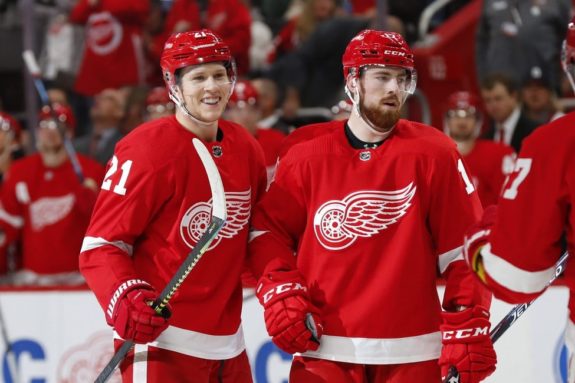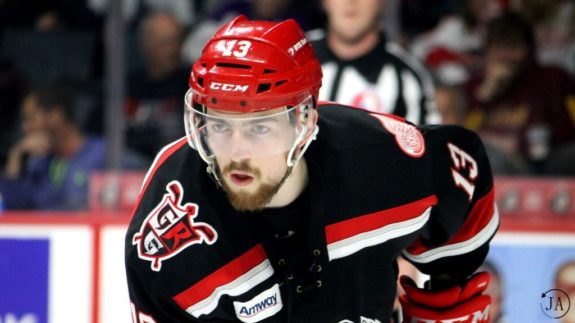Filip Hronek has quickly become the go-to guy in Detroit. His abilities are highly praised and with good reason. He set records in the American Hockey League with the Grand Rapids Griffins and has impressed the Detroit Red Wings with his elite skills this season.
With a resume dripping with success, it’s no wonder Hronek has made his way to the big club sooner than most within the organization. His expedited development is breathing new life into the team’s rebuild. Hronek has only improved – begging the question – can others follow suit?
Hronek’s Built-In Two-Way Game
A player, at any level, needs a “strong two-way game.” It’s one of those standard hockey cliches that makes perfect sense to any student of the game. Clubs spend millions on prospects and entry-level contracts to better shape their “two-way” style of play. Hronek’s team-leading plus-24 in his rookie season in Grand Rapids was evidence he had that ability already.

What makes Hronek special compared to other prospects in the organization, like Dennis Cholowski or Gustav Lindstrom, who are working out some developmental kinks, is that he already possesses an offensive mindset. From the beginning, he’s shown he has no problem starting offensive rushes and seeing them through.
With Grand Rapids, it was almost a given that Hronek would be on the scoresheet. He has a defined sense of his style and how it fits into the league, which is an incredible advantage.
Confidence Leads to High Compete Level
Hronek also has a very high compete level which has given him confidence – bordering on arrogance. As a result, he wrestled in his second pro season with his attitude on and off the ice. His frustration with Detroit not keeping him in the NHL came from not understanding why.

He played the majority of the 2018-19 season with Detroit, with 23 points in 46 games, so it seemed like a slap in the face to return to the AHL. I spoke with him during that season and it was apparent he was confused and angry.
Over time, the frustrations faded. His mentality and how he carried himself flowed into his overall game. Hronek came to see that an opportunity was laid before him and it was up to him to succeed or fail.
In a few short weeks, he had gone from lashing out with reckless and costly penalties, to self-regulation and control. To use another cliche, he got back to just playing his game. That period of time showed the mental development required for each prospect and how hard the team could push them.
Harder Development for Prospects
Hronek has established himself this season. He’s become a top defensive skater playing between 20 and 26 minutes a night. His quick development has much to do with his natural ability and willingness to learn, but what does it say for the future of the Red Wings’ player development?
In light of Hronek’s success, perhaps lengthy development periods aren’t always the most effective – expecting more early on may work. Using Hronek as an example, could the Red Wings ask for more from their prospects throughout their development? Absolutely.
Framing the Future
Simply put, Hronek’s progression has produced an encouraging glimpse at the future of Detroit’s rebuild, (from ‘Filip Hronek continues to be a bright spot during difficult Red Wings’ season,’ The Detroit News, 12/08/2019). Fans are now starting to see the defensive development take shape.

Hronek has provided proof that the rebuild can take on a higher level of expectation – encouraging the players to either match those expectations or move on.
Detroit has a solid defensive core currently in development that I believe is ready for the challenge. By the time 2020-21 free agency rolls around, there should be several players ready to move up and fill the void left by vacating defensemen.
Do you think Detroit should push defensive prospects harder?